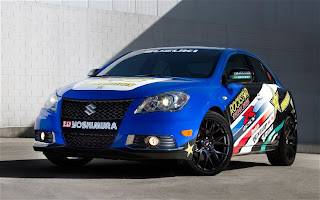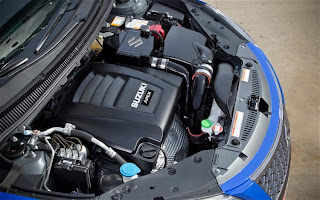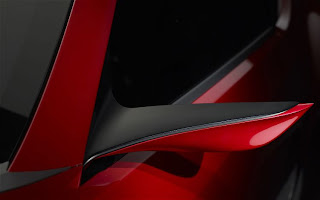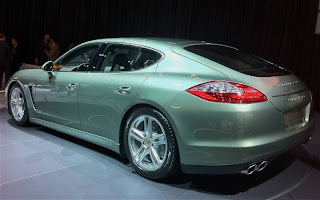Suzuki Kizashi Apex Concept
 |
| Suzuki Kizashi Apex Concept |
The Suzuki Kizashi isn't the most popular small sedan on the market, and that's too bad. We love the car's sharp design, comfortable interior, and enthusiast driving experience. The only letdown is its straight-line performance. The standard 2.4-liter inline-four engine offers just 185 horsepower (180 with continuously variable transmissions) and 170 pound-feet of torque, which yields adequate but hardly thrilling acceleration. Suzuki's Apex concept aims to rectify the power deficiency by turbocharging the Kizashi to produce up to 300 horsepower.
We're big fans of the Suzuki Kizashi, admiring its smart styling, practicality, and engaging handling dynamics. The one area we'd address is acceleration, which is competent but hardly awe-inspiring, thanks to a 2.4-liter inline-four offering 185 horsepower (180 with continuously variable transmissions) and 170 pound-feet of torque. Suzuki will cater to our speed-freak side with a turbocharged Kizashi capable of up to 300 horsepower, debuting at the New York auto show.
This isn't the first time that Suzuki has given in to the need for speed, having previously contracted Road Race Motorsport to build a 290-horsepower Kizashi Turbo for last year's Specialty Equipment Market Association show. Although considerably quicker than its donor car, the RRM Kizashi car felt unrefined, with excessive turbo lag and overly stiff suspension that made for a jarring ride. RRM also built a 221-horsepower Suzuki SX4t back in 2008, which was quicker than the regular 143-horsepower SX4 but also suffered from poor suspension tuning.
Suzuki Kizashi Apex Concept
Suzuki Kizashi Apex Concept


















































